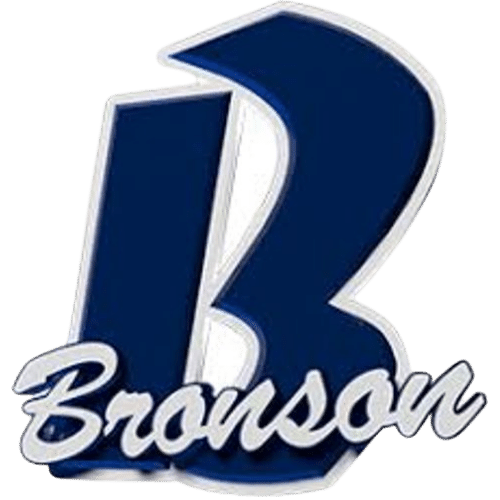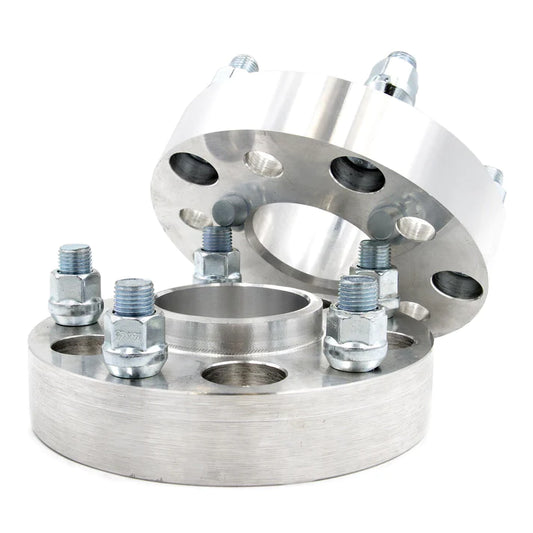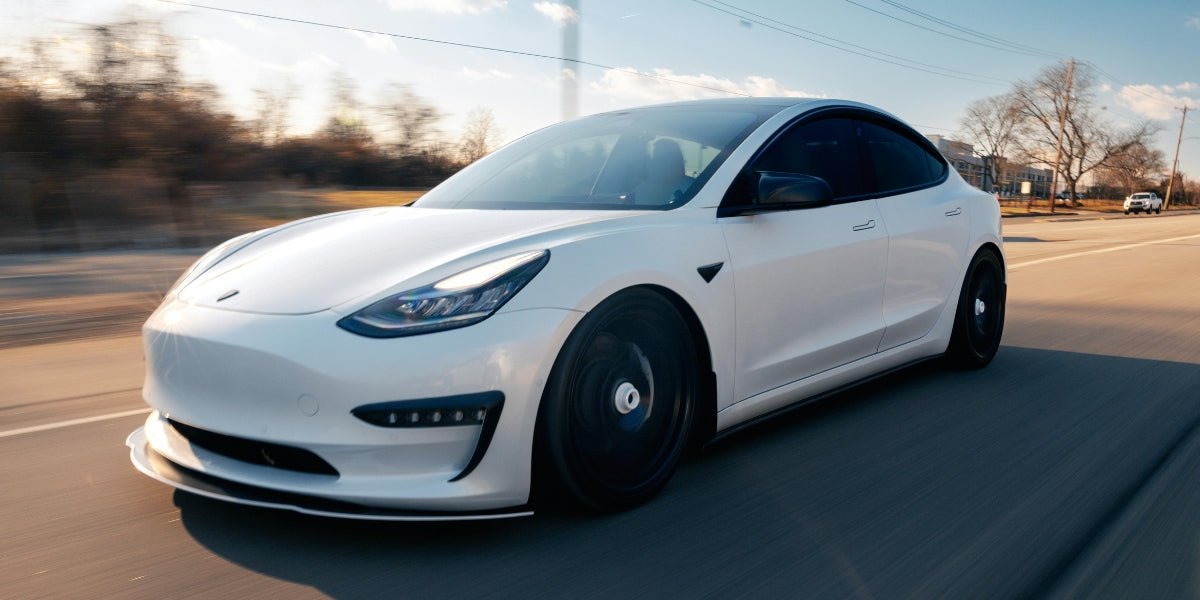-
5x120 Hub Centric Wheel Spacers 15mm-2"
Regular price From $106.95 USDRegular priceUnit price per$118.80 USDSale price From $106.95 USDSale
Fitment Chart
MODEL 3
2017-NEWER
Bolt Pattern : 5x4.5 (5x114.3)
Studs and Lug Nuts : 14x1.5
Center bore : 64.1mm
MODEL S
2012-NEWER
Bolt Pattern : 5x120
Studs and Lug Nuts : 14x1.5
Center bore : 64.1mm
MODEL X
2016-NEWER
Bolt Pattern : 5x120
Studs and Lug Nuts : 14x1.5
Center bore : 64.1mm
MODEL Y
2020-NEWER
Bolt Pattern : 5x4.5 (5x114.3)
Studs and Lug Nuts : 14x1.5
Center bore : 64.1mm
FAQ
Do I Have To Cut My Stock Vehicle Studs?
No. Tesla OEM Wheels should have pockets in between the lug holes in the back of the wheels. If the studs and lug nuts make contact with the wheels, DO NOT install the adapters.
Disclaimer :
Most aftermarket wheels have pockets in between the lug holes, please make sure before purchasing.
What If My Wheels Don't Have Pockets in Between The Lug holes?
You will have to go 1" inch thick to cover the vehicle stud length.
Disclaimer:
If the vehicle studs make contact with the back of the wheels, you will have to buy a thicker adapter/spacer.
Do You Accept Returns / Exchanges?
No, we strongly recommend doing research or contacting us before placing the order if you're unsure of fitment.
What Is The Difference Between A Hub Centric and Lug Centric (Regular) Wheel Spacer/Adapter?
Hub-centric and lug-centric wheel spacers/adapters refer to different designs used to fit wheels onto a vehicle. Here's the difference between the two:
- Hub-Centric:
- In hub-centric wheel spacers or adapters, the center hole of the spacer is designed to perfectly match the hub diameter of the vehicle and the OEM wheels.
- This ensures that the weight of the vehicle is primarily supported by the hub and not the studs on the adapter/spacer.
- The precise fit reduces the likelihood of vibrations, wheel wobbling, and ensures better balance.
- Lug-Centric (Regular):
- Lug-centric spacers or adapters rely on the lug nuts to get centered on the hub and the wheels being mounted on to the spacer/adapter.
- Commonly used for Aftermarket wheels.
- The center hole in lug-centric spacers is typically larger than the hub, allowing for a more flexible fit.
- The load is mainly on spacers/adapters studs rather than the hub.
In summary, the key difference lies in how the spacer or adapter centers the wheel on the vehicle. Hub-centric designs provide a more accurate and balanced fit, reducing the chances of vibrations and other issues. Lug-centric designs depend on the lug nuts for centering and may not offer the same precision as hub-centric ones. Choosing between them depends on factors like vehicle specifications, intended use, and personal preferences.
What Is The Difference Between OEM & Aftermarket Wheels?
- OEM Wheels: These are the wheels that come as original equipment on a vehicle when it is manufactured. They are specifically designed and produced by the vehicle manufacturer or a contracted supplier.
- Aftermarket Wheels: These wheels are produced by third-party manufacturers not associated with the original vehicle production. They are designed to fit a wide range of vehicles.
I Have Aftermarket Wheels, Will These Spacers/Adapters Fit?
Our products are tailored to seamlessly fit with all factory components and OEM wheels. For customers with aftermarket wheels, we offer Lug Centric Wheel Spacers/Adapters. If you want the best fitment possible and have a hub ring to match the aftermarket wheels center bore, feel free to contact us for a customized order, and kindly have that information ready when calling, as we will request those details during the order process.
Why Wouldn't A Aftermarket Wheel Match The Vehicles Center Bore?
Manufacturers do this so it can fit a wide variety of vehicles.
For example 5x4.5 wheels could have a 74mm centerbore, which is enough to cover all 5x4.5 vehicles.


